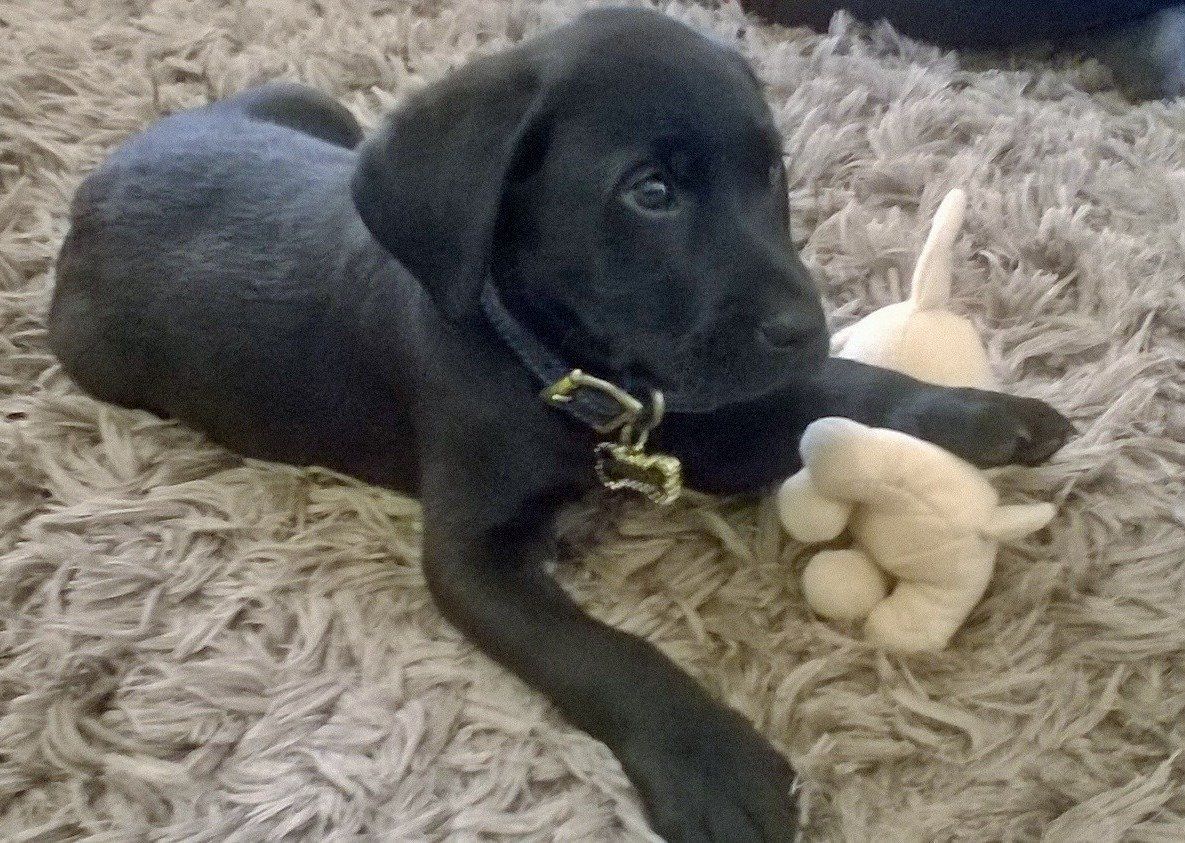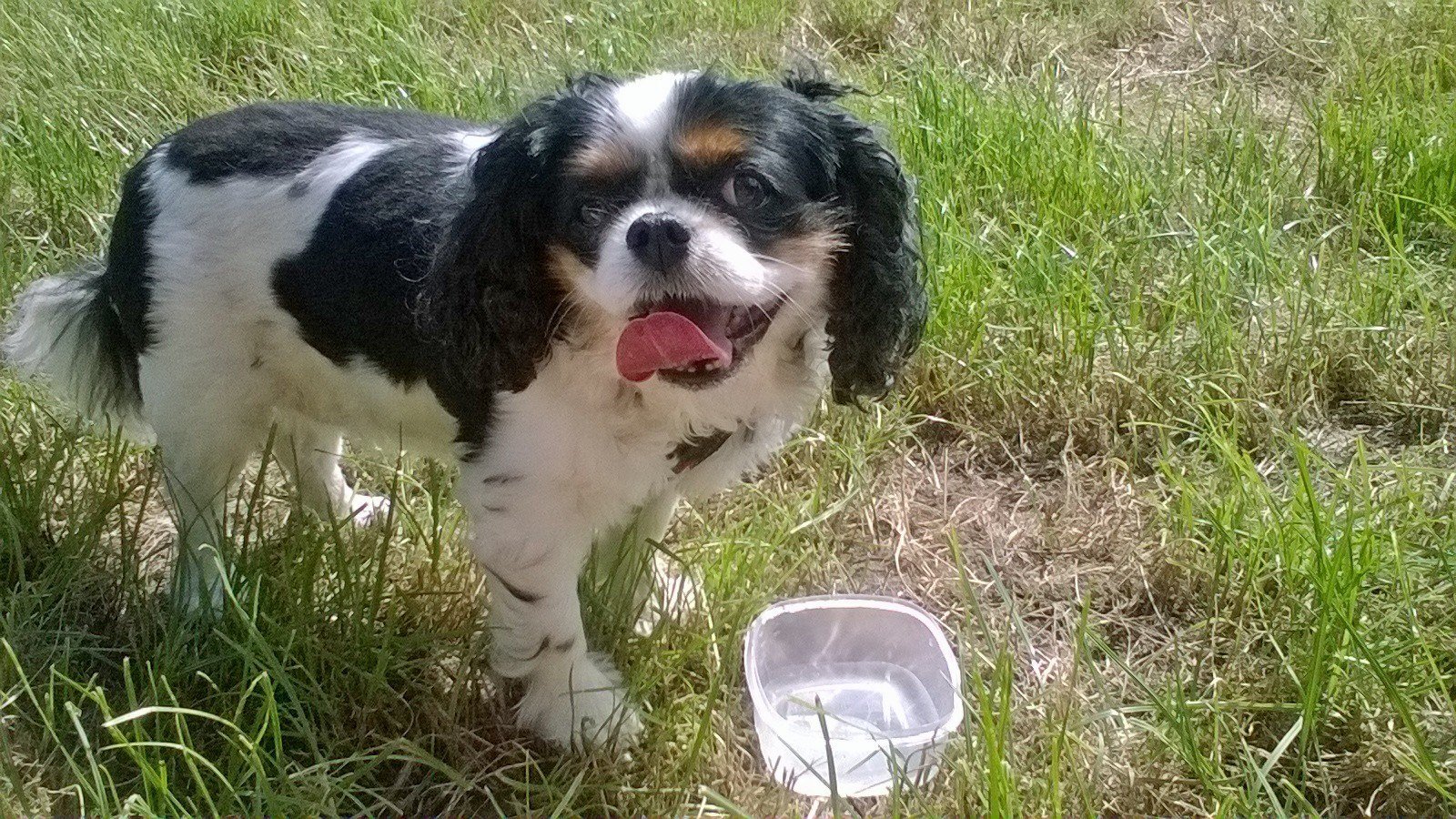Blog

Dogs and humans have similar psychological responses to stress, and as with people, some dogs are just more sensitive to stress triggers than others. While mild stress can be healthy because it provides physical and mental stimulation, long term stress can cause a serious degeneration in health. In stressful situations, similarly to humans, cortisol (a necessary stress hormone that readies the body for danger) is released from the dog’s adrenal glands following signals from the amygdala to initiate the ‘flight or fight’ response. It is our innate alarm system and is what keeps us and our dogs safe, enabling a quick reaction in a crisis. Unfortunately when stress is sustained and repeated in the long term (for example, continued and frequent exposure to someone or something the dog is scared of), the brain’s recognition of threat signals becomes over activated and the body finds it difficult to return to its ‘normal state’ once the stress inducing event has passed. In chronic situations stress can lead to weight loss, immune deficiencies, poor coat condition, skin problems and has been linked to heart disease and gastrointestinal disorders. Long term stress can also cause depression (referred to as ‘learned helplessness’ in dogs) and trigger obsessive compulsive disorders such as spinning and tail chasing or self-harming (for example, repeatedly nibbling at a certain spot). Some dogs express stress by appearing to be naughty, while others become withdrawn and shut down. Symptoms can be quite varied but include signals such as dilated pupils, whale eye or avoiding eye contact, ears pinned back, body hunched, tail under or wagging uncertainly, shaking, salivating, panting heavily, yawning, tongue lolling, pacing, urinating, destruction or chewing, loss of appetite, over-activity or reduced activity, scratching, sweaty paws and excessive vocalising. A stressed dog may react defensively, therefore it is important to be proactive and look out for symptoms (particularly in new situations), so that you can remove the dog if it is uncomfortable. If you use a dog walker make sure they understand canine body language and can respond to what your dog is trying to tell them - some dogs may be stressed by group walks and may be more suited to a smaller group or solo walks. A good dog walker will always get to know your dog before deciding which other dogs it may get along with and enjoy the company of. Here at Charli's Pet Angels dogs will always be walked on their own initially to build trust and then introduced to suitable dogs individually to minimise any potential stress before being walked as part of a small group.

In the past we believed that dogs display dominant behaviour because they are intent on being at the top of our family hierarchy and that we must show them who is the ‘pack leader’ or they will walk all over us. This is a misguided theory based on expressions studies on wolves in captivity by Rudolph Schenkel in the 1940’s. Whilst it was a great study, the findings are not relative to what happens in the real world and “keeping any kind of predatory animal in a restricted area with others of its kind is a far cry from ‘natural’ behaviour” ( Sarah Whitehead, ‘Clever Dog’ ). Whilst dogs and wolves do share a genetic background, dogs are not tame wolves. However, because owners liked the idea that their dog was a wolf in disguise, many trainers bought into the dominance theory and encouraged methods (which can be traced back to old gun dog training) designed to frighten and intimidate dogs into submission. This included encouraging owners to eat before their dogs, to ignore them when they came home and to pin their dogs down in an ‘alpha rollover’. Such methods can cause a great deal of harm, damaging the bond between the owner and dog, causing the dog to snap or to shut down entirely. Thankfully, modern research has given us a much better understanding of how dogs think and feel, and whilst there is still a lot of re-education work to be done, positive training methods are now much more commonplace. The relationship between an owner and a dog should be one of cooperation and team-work, not as adversaries: Dogs, like people, learn in different ways. This does not mean that dogs do not use dominant behaviour – it is our understanding of it that has been warped and we tend to think only of the bad connotations of the word such as bullying and aggression. One dictionary definition that is useful to remember is ‘primary authority or influence’. Dogs will use dominance in their canine social relationships, but it is commonly a non-violent form used in a way that de-escalates a situation and avoids conflict. For example, a gesture such as a stern direct stare or a deep growl is often enough to ensure the dog has priority access to resources. Studies of free roaming street dogs and dogs in day-care have found that age rather than size is the main factor in the social hierarchy between dogs, with the elders guiding and coaching the youngsters: There is little aggression. Unfortunately, there have been no particular studies into this in multi-dog households, however we know that in a stable group there is no real need for dominance as we control everything: The hierarchy is fluid, depending on what matters most to each dog. For example, one dog may place higher priority on access to food, another may see access to a particular comfy bed as more important.

One big reason to consider using a professional cat sitter instead of asking your friend/neighbour/relative/colleague is that they may feel obligated to say yes when they don't really have the time or understand the amount of responsibility involved in looking after someone else's precious pets. Your friend or colleague might really like cats, but will they realistically have the time to spend interacting with them and making sure they are coping ok with your absence? Will they be able to give them plenty of cuddles and play with them? Or will they just run in and top up the food dish on their way to work and forget about them until the next day? Might they forget to go altogether if something crops up? Looking after your cat is unlikely to be their main priority... Your neighbour's son or brother's girlfriend might mean well, but will they actually remember to check the cats have fresh water? Will they think to clean the bowls before each meal or vacuum if your indoor cat kicks litter everywhere? (let's face it - most are pretty adept at making sure there's more litter on the floor than left in the box!). Will they send you lots of photos and updates to put your mind at ease? Will they put the bins out for you and water your plants? You should also think about whether your chosen helper would know what to do in an emergency: Could they spot the signs if your cat was unwell and act accordingly? Do they have the means to transport your cat to the vets on your behalf? Could they administer medication if a vet said it was needed? Wouldn't you rather ask someone who is completely committed to the care of your feline companion? Employing a professional cat sitter like Charli's Pet Angels ensures your pet will get the dedicated time and attention they deserve, from someone who is genuinely besotted with cats and experienced in caring for them.

Anthropomorphism means to assign uniquely human behaviours, motivations and characteristics to an animal or object. Although it is a natural human tendency for us to do this concerning our dogs, it is unhelpful as it clouds our judgement and understanding of what the dog is really trying to tell us and is unfair to the dog. It hinders our ability to objectively view their behaviour. An example of anthropomorphism is when an owner describes their dog as having a ‘guilty’ look because they ‘know they have done something naughty’ – such as raiding the bin or chewing up a cushion while they were out. Although the dog’s body language might look similar to our idea of what guilt looks like in a human (head lowered, avoiding eye contact, and with ears pinned back and tail tucked), research has shown that dogs are not capable of experiencing guilt and the ‘look’ is in response to changes in our own body language and tone of voice. The dog is anxious not remorseful and is giving us appeasement behaviours because we appear angry or upset. An example of this is my own German Shepherd dog Cassie who would often sneak downstairs in the night to check if the cats had left any food or if there were any treats in my bag or coat pocket. If I got up and followed her and asked her what she was up to, she would jump on the sofa, lie down, give me what I perceived as a sheepish ‘look’ and offer me her paw. This wasn’t because she was feeling guilty about being caught in the act – she was responding to signals I subconsciously gave out. A circumstance in which it may however prove helpful to use anthropomorphism would be when trying to explain something about the dog to a child in order to help ensure they interacted with them safely (for example, telling a child that pulling the dog’s tail hurts them just like it hurts when someone pulls their hair).



